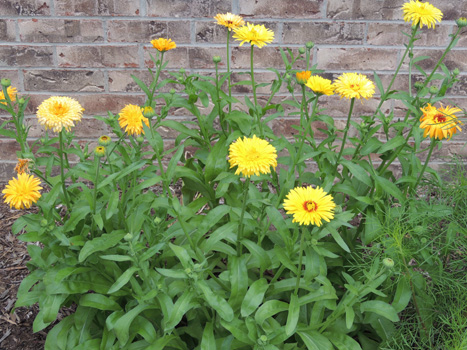Flower of the Month - October
15th Sep 2021
Flower of the Month for October

Annual, Calendula Officinalis
Calendulas are a very prolific, easy to grow annual flower. Also known as "Pot Marigolds", Calendulas produce orange, yellow, and lemon colored flowers on long stems. Flowers will bloom from mid-summer all the way until frost. They make great indoor arrangements, but need to be checked for aphids before bringing them in. They would be more popular, but they give off an unpleasant odor that is sometimes too strong indoors.
Did you know? Calendula petals are used in soups, stews and salads. Calendula leaves can also be used for decorating cakes.
Plant Height: 12" - 24"
Plant Propagation:
Calendula are grown from seeds. Sow Calendula seeds early in the season, and cover lightly with 1/4" of garden soil. They germinate easily and will grow quickly, producing their first of a continual display of blooms by mid-summer.
Select a location in your garden where they can grow undisturbed for years and years, as these flowers will drop their seeds and reseed your flowerbed each year. Space plants 15" apart.
Days to Germination: 10 - 14
How to Grow Calendula:
Low maintenance Calendula plants like rich, well drained soil, but are very tolerant of average to slightly poor soils. Improving your soil quality will produce much healthier plants and flowers, so add plenty of compost. Add a general purpose fertilizer once a month.
Once your Calendula plants are established, they should grow well, even if left unattended. Water them during dry periods, once or twice per week.
Add mulch around the plants for appearance and to keep weeds down.
Early in the summer, your plants will begin to produce large flowers on long stems. They will continually produce flowers even after the first light frost. As you pick the flowers for indoor arrangements, look carefully on the stem and the undersides of the leaves for aphids.
Pick dead blooms to keep the plants neat looking and to encourage new blooms. See: deadheading blooms
Calendula is a somewhat hardy annual. It will not be harmed by a light frost either in the spring or fall. It will succumb to heavy frosts or freezes.
Flowers Bloom: Summer to Fall
Insect and Disease:
The biggest drawback to Calendulas is that insects like them and they are subject to plant disease. Aphids are the most common insect problem. They are readily treated with an insecticidal soap or repellent. Sevin should also work well. Inspect flowers closely before bringing them indoors.
The most common disease are mildews resulting in hot, humid weather or rainy weather. Use fungicides if mildew problems arise.
More Garden Information:
